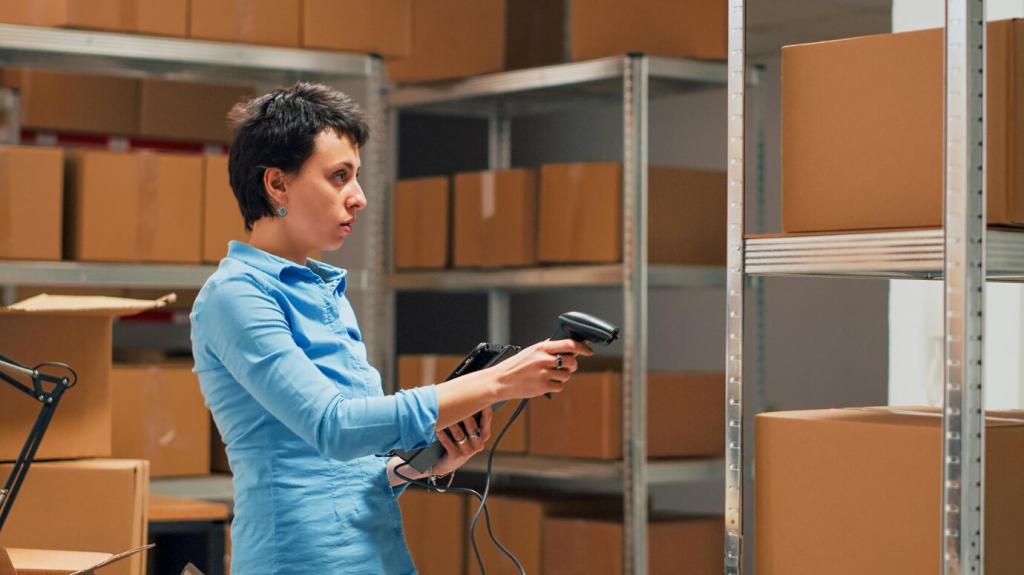Case Studies: Successful Warehouse Automation — Real-world Wins and Lessons
Chosen Theme: Case Studies: Successful Warehouse Automation. Dive into uplifting, practical stories where warehouses transformed accuracy, speed, and safety. Get inspired, learn what truly works, and subscribe to follow new case studies, frameworks, and behind-the-scenes insights from operational champions.
Before automation, the team relied on paper picks, long walking paths, and rushed audits. Mis-picks averaged 2.8%, and peak season backlogs stretched to three days. Employees felt overwhelmed and customers noticed delays, leading to costly cancellations.
From Chaos to Flow: An Apparel Retailer’s Picking Transformation
They deployed a zone-based pick-to-light system, mobile scanners, and a WMS with wave planning. Slotting optimization grouped high-velocity SKUs near pack stations. Simple, color-coded cues reduced training time dramatically, empowering new hires to reach target productivity within a single week.
From Chaos to Flow: An Apparel Retailer’s Picking Transformation
Cold Chain Precision: A Food Distributor’s Temperature-Safe Fulfillment
Safety, Spoilage, and Compliance Pressures
Manual handling in chilled zones extended dwell time, raising spoilage risk. Audits flagged inconsistent temperature logging, and peak demand triggered hurried errors. The business needed traceability, predictable throughput, and proof that every carton moved within validated temperature windows.
Technology Choices That Reduced Dwell Time
Automated conveyors linked to temperature sensors, RFID-tagged pallets, and smart doors created faster, documented handoffs. The WMS enforced first-expire-first-out rules. Mobile prompts guided workers along the shortest chilled route, shaving minutes from each pick while preserving data integrity.
Outcomes: Waste Down, Confidence Up
Spoilage decreased by 27% quarter over quarter, and audit readiness improved with digital trails. The team reported less physical stress thanks to smoother flow. Customers noticed consistent freshness, while managers finally trusted the numbers displayed on cold room performance dashboards.
Peak Season Without Panic: A 3PL’s Scalable Automation Playbook
Volatility and Labor Constraints
Customer campaigns created sudden volume surges that outpaced hiring and training. Temporary labor struggled with complex processes, and overtime costs spiraled. The operation needed surge capacity that could be spun up quickly without sacrificing accuracy or safety protocols.
Modular, Mobile, and Fast-to-Deploy Solutions
They introduced goods-to-person mobile robots in flexible pods, adjustable pack benches, and plug-and-play scanning stations. Software throttled waves to match real-time capacity. Roll-in modules arrived pre-configured, making ramp-up a matter of hours rather than weeks during promotions.
Business Impact and Client Retention
Throughput rose 32% during the holiday peak with no overtime. Error rates held steady below one percent, preserving SLAs. The 3PL won two new clients after sharing performance dashboards, proving they could absorb sudden growth without breaking a sweat.
Safety Meets Speed: Heavy-Parts Manufacturer Automates Transport
Forklift congestion caused near misses and damaged racks. Manual transport slowed assembly, and downtime rippled across shifts. Leadership wanted fewer touchpoints, clearer routes, and data to prove the facility could grow without increasing safety incidents or insurance costs.


Unsorted returns piled up, leaving stockouts in forward pick locations. Manual disposition decisions were inconsistent, and refurbishment steps weren’t tracked. Customer service lacked visibility, leading to slow refunds and avoidable churn at precisely the worst moment in the journey.

A vision system identified condition tiers, routing items to refurbish, repackage, or recycle lanes. The WMS synchronized re-stocking with forward demand. Guided checklists reduced subjectivity, while dynamic rules ensured high-value items received immediate attention and were replenished first.

Refund cycle time dropped from five days to forty-eight hours, and resale rates improved. Transparent notifications reassured customers their return was processed. Margin leakage narrowed as salvageable products re-entered inventory quickly, feeding back into more accurate demand planning.


Data-Driven Improvement: WMS + IoT for Continuous Gains
They tagged conveyors, stations, and carts with sensors to capture delays and idling. The WMS exported clean event streams. With a trustworthy baseline, the team finally debated facts, not opinions, and prioritized fixes that directly addressed recurring chokepoints.
Data-Driven Improvement: WMS + IoT for Continuous Gains
Two slotting strategies ran in parallel for similar SKU families. Operators rotated weekly to minimize bias, and safety observers monitored fatigue. The winning layout reduced touches noticeably, proving small design changes can outperform costly upgrades when guided by evidence.

Power Management and Smart Scheduling
The facility synchronized high-draw equipment with off-peak windows and used sensor-triggered conveyors to avoid idle runs. Lighting zones reacted to motion and task priority. Visibility into energy use by process unlocked surprisingly easy reductions without sacrificing throughput.

Right-Sized Packaging and Automation
Automated cartonization matched box sizes to actual contents, cutting void fill and freight costs. Digital print-on-demand labels eliminated wasteful reprints. Workers appreciated less lifting of oversized cartons, while customers praised tidier, greener packages that still protected goods during transit.

Credibility Through Measurement and Reporting
Real-time dashboards tracked kilowatt-hours per shipped order and CO2 equivalents avoided. Quarterly reporting made progress tangible for stakeholders. Savings funded additional upgrades, creating a virtuous cycle where environmental responsibility and operational excellence reinforced each other meaningfully.
